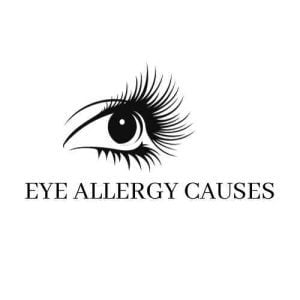Eye allergies caused by an immune response to certain allergens, such as pollen or pet dander. These allergens trigger a reaction in the eyes, leading to symptoms like itching, redness, and watery eyes.
Eye allergies can be uncomfortable and disrupt daily activities. Eye allergies, also known as allergic conjunctivitis, occur when the immune system overreacts to specific allergens. Common triggers include pollen, mold spores, dust mites, pet dander, and certain eye medications. When these allergens come into contact with the eyes, they stimulate the release of chemicals, such as histamine, causing inflammation and irritation.
This immune response leads to symptoms like itching, redness, watery eyes, and swollen eyelids. While eye allergies are typically not serious, they can be bothersome and affect quality of life. Managing allergies through avoidance of triggers and appropriate treatment can help alleviate symptoms and improve eye comfort.
Unveiling Eye Allergy Mysteries
Allergies can be a perplexing and frustrating experience, especially when they affect something as delicate and crucial as our eyes. Eye allergies, also known as allergic conjunctivitis, can turn even the simplest of activities into an uncomfortable ordeal. In this article, we will delve into the various causes of eye allergies, separating fact from fiction, and uncovering the hidden truths behind this common condition.
Background On Eye Allergies And Common Misconceptions
Educating ourselves about eye allergies is the first step towards understanding and managing them effectively. Contrary to popular belief, eye allergies are not caused by allergens entering the eyes themselves, but rather by the immune system’s overreaction to these irritants. Allergens, such as pollen, dust mites, or pet dander, trigger an allergic response in the body, leading to uncomfortable symptoms like itching, redness, and excessive tearing.
There are some common misconceptions surrounding eye allergies that need to be debunked. One prevalent myth is that eye allergies only occur during specific seasons, such as spring. While it’s true that seasonal allergens like grass or tree pollen can exacerbate symptoms, eye allergies can occur all year round due to indoor allergens like mold or dust.
Another misconception is that eye allergies are solely a result of genetics. While there is a genetic component to allergies, environmental factors play a significant role as well. Understanding the link between our surroundings and ocular irritation is crucial in managing and preventing eye allergies.
Links Between Environment And Ocular Irritation
Our immediate environment can have a direct impact on the severity and frequency of eye allergy symptoms. For instance, spending time outdoors during high-pollen days can heighten the risk of allergic reactions. Additionally, poorly ventilated indoor spaces can harbor allergens like dust and mold, exacerbating eye allergies for those who are sensitized to these triggers.
To minimize ocular irritation, individuals prone to eye allergies should take proactive measures to reduce their exposure to allergens. Simple actions such as keeping windows closed during high-pollen days, using air purifiers or filters, and regularly cleaning bedding and upholstery can go a long way in creating a more allergen-free environment.
It’s worth noting that some occupations or hobbies might expose individuals to specific allergens, leading to chronic eye allergies. For example, people working in agriculture or gardening may be more susceptible to eye allergies from exposure to plant pollen. Similarly, swimmers might experience eye irritation due to chlorine or other chemicals present in pool water.
By understanding the links between our environment and ocular irritation, we are better equipped to prevent and manage eye allergies effectively. Now that we have shed light on the background and common misconceptions surrounding eye allergies, let’s explore specific triggers and treatment options in subsequent articles.
Common Versus Uncommon Allergens
Eye allergies, also known as allergic conjunctivitis, affect millions of people worldwide. These allergies occur when the eyes come into contact with substances that trigger an immune response, leading to uncomfortable symptoms such as redness, itching, and swelling. While some allergens are well-known for their eye irritation effects, there are also lesser-recognized triggers that can provoke eye allergies. Understanding these common and uncommon allergens is vital in managing and preventing eye allergy symptoms effectively.
Typical Allergens Known To Affect The Eyes
Several common allergens are notorious for causing eye irritations and allergies. By identifying these typical triggers, individuals can take proactive steps to avoid them and reduce the risk of eye allergy outbreaks:
- Pollen: Pollen grains released by plants during specific seasons can cause allergic reactions in susceptible individuals. Wind-dispersed pollen from trees, grass, and weeds are frequent culprits for triggering eye allergies. People suffering from hay fever or seasonal allergies often experience itchy, red eyes due to pollen exposure.
- Dust mites: These microscopic insects thrive in household environments, especially in bedding, upholstered furniture, and carpets. Dust mite droppings contain potent allergens that can easily become airborne and cause eye irritation. Regular cleaning and maintaining a dust-free living space can help minimize eye allergy symptoms.
- Pet dander: Allergic reactions to pet dander, such as cats or dogs, can manifest as eye allergies. Exposure to pet saliva, urine, or skin flakes can trigger an immune response, leading to red, itchy eyes. Creating allergen-free zones at home and frequent pet grooming can assist in reducing eye allergy symptoms.
- Mold: Mold spores thrive in damp environments and can trigger eye allergies upon inhalation. Indoor mold colonies, such as those found in bathrooms, kitchens, and basements, can release spores into the air, irritating the eyes. Adequate ventilation, proper moisture control, and regular mold cleaning can help alleviate eye allergy symptoms linked to mold.
- Cosmetics and personal care products: Certain eye cosmetics and personal care products may contain allergenic substances, such as fragrances and preservatives. These can cause eye allergies in individuals with sensitivity. Being cautious while selecting eye makeup and skincare products and opting for hypoallergenic options can minimize the risk of eye irritation.
Less Recognized Triggers That Can Provoke Eye Allergies
While the above allergens are widely known for causing eye allergies, there are lesser-recognized triggers that can provoke allergic reactions in sensitive individuals. These less common allergens should also be taken into consideration to ensure comprehensive protection against eye allergies:
- Perfumes and colognes: Fragrances used in perfumes, colognes, and scented lotions can be potential eye irritants for some people. The volatile nature of these chemical compounds can lead to allergic reactions in individuals with heightened sensitivity, affecting the eyes.
- Makeup brushes: Makeup brushes, if not cleaned regularly, can accumulate allergens such as dust, pollen, and other debris. These allergens can then transfer onto the eyes during makeup application, triggering eye allergies. Maintaining cleanliness and periodically washing makeup brushes are vital steps to prevent eye allergies.
- Contact lenses: While contact lenses themselves do not cause eye allergies, improper lens care and maintenance can lead to allergic reactions. Failure to clean and store lenses properly can result in the accumulation of allergens and bacteria, leading to eye irritation and discomfort.
- Medications: Certain medications, including eye drops or oral medications, can sometimes induce allergic reactions in individuals. Although relatively rare, it is essential to be aware of potential allergic side effects and consult a healthcare professional if experiencing eye allergy symptoms after starting new medications.
- Weather changes: Weather fluctuations, particularly during spring and fall, can exacerbate eye allergy symptoms. Dry and windy conditions can increase the airborne allergen load, while high humidity can create an environment conducive to mold growth. Paying attention to weather forecasts and taking preventative measures, such as wearing sunglasses and using eye lubricants, can help manage eye allergies during weather changes.
Surprising Eye Allergy Causes
Eye allergies, also known as allergic conjunctivitis, can be triggered by several factors. While pollen and pet dander are often recognized as common culprits, there are other surprising causes that can lead to uncomfortable allergic reactions. Understanding the internal and external factors influencing eye allergies is crucial to effectively manage and prevent the symptoms. In this article, we will explore the lesser-known causes of eye allergies.
Internal Factors That Can Lead To Allergic Reactions
Allergies are often associated with external elements such as pollen and dust. However, there are certain internal factors within our own bodies that can contribute to eye allergies. These include:
- Hormonal Imbalances: Changes in hormone levels, such as during puberty, pregnancy, or menopause, can potentially trigger eye allergies.
- Genetic Predisposition: Some people have a genetic tendency toward developing allergies, including eye allergies.
- Weak Immune System: A weakened immune system can make individuals more prone to allergic reactions, including those affecting the eyes.
If you have a history of allergies, hormonal imbalances, or a weakened immune system, it is important to be aware of these internal factors as potential triggers for eye allergies.
External Factors Influencing Eye Allergies
Beyond internal factors, several external elements can also contribute to eye allergies. These factors include:
- Environmental Allergens: Pollen, mold, dust mites, and pet dander are common environmental allergens that can trigger eye allergies.
- Eye Irritants: Certain substances like smoke, pollution, and strong odors can irritate the eyes and lead to allergic reactions.
- Contact Lenses: Improper hygiene and maintenance of contact lenses can cause eye allergies due to the accumulation of bacteria and debris.
- Makeup and Cosmetics: Some individuals may be allergic to certain ingredients present in makeup and cosmetics, leading to eye allergies.
Being exposed to these external factors can activate an allergic response in the eyes, resulting in redness, itching, watering, and swelling.
By understanding the surprising causes of eye allergies, you can take proactive measures to minimize your exposure to these triggers and alleviate symptoms. In the next section, we will discuss effective methods for managing and preventing eye allergies, providing you with relief and improving your overall eye health.
Hidden Allergens In Everyday Life
Unnoticed Substances And Conditions Causing Eye Discomfort
Eye allergies can be a real nuisance, causing itchiness, redness, and watery eyes. Most people know that allergens like pollen, pet dander, and dust mites can trigger these symptoms. However, there are also many hidden substances and conditions in our everyday lives that can cause eye discomfort without us even realizing it. In this article, we will explore some of these often overlooked allergy triggers and how you can avoid them to keep your eyes feeling refreshed and irritation-free.
Household Items Often Overlooked As Allergy Triggers
Our homes are supposed to be a safe haven, but they can also be a haven for hidden allergens. Here are some household items that you may not suspect of causing eye allergies:
1. Carpets and Rugs
Carpets and rugs not only collect dust and pet dander but can also harbor mold spores. These tiny organisms thrive in moist environments, and if left unchecked, they can trigger allergic reactions and eye discomfort. Regular vacuuming and steam cleaning can help reduce the allergen levels in your carpets and rugs.
2. Upholstered Furniture
Upholstered furniture, such as couches and chairs, can be a cozy spot for dust mites. These microscopic creatures feed on dead skin cells and can cause a range of allergy symptoms, including itchy and watery eyes. Regularly vacuuming and using allergen-proof covers can help minimize exposure to dust mites.
3. Indoor Plants
Indoor plants not only add a touch of nature to your living space but can also contribute to eye allergies. Mold spores can grow in the moist soil of indoor plants and become airborne, triggering allergic reactions. Consider choosing plants with lower mold-retaining potential and be cautious with overwatering to minimize mold growth.
4. Air Fresheners and Scented Candles
While they may make your home smell pleasant, air fresheners and scented candles can release volatile organic compounds (VOCs) into the air, which can irritate the eyes and trigger allergies. Opt for fragrance-free natural alternatives or use essential oils to create a pleasant scent without the potential allergenic effects.
5. Cleaning Products
Many conventional cleaning products contain harsh chemicals that can irritate the eyes and worsen eye allergies. Look for eco-friendly and hypoallergenic options that are free from fragrances and harsh chemicals to protect your eyes while maintaining a clean home.
By paying attention to these often unnoticed allergens in your everyday life, you can take proactive steps to minimize their impact on your eye comfort. Implementing simple changes, such as regular cleaning and opting for hypoallergenic alternatives, can significantly reduce your exposure to hidden allergy triggers and help keep your eyes feeling their best.
Allergic Reactions And Eye Health
Allergies can be a real nuisance, especially when they affect your eyes. The itchy, red, and watery eyes that come along with allergic reactions can not only be uncomfortable but also have long-term effects on your eye health. In this article, we will delve into how allergies can impact your eye health and discuss protective measures you can take to minimize allergic reactions.
How Allergies Can Impact Long-term Eye Health
Allergic reactions can have a detrimental effect on your eyes if left untreated. Chronic eye allergies, also known as allergic conjunctivitis, can lead to several issues that can affect your vision and overall eye health:
- Conjunctivitis: Allergies can cause inflammation of the conjunctiva, the thin layer that covers the white part of your eye and the inner surface of your eyelids. This can result in red, itchy, and swollen eyes.
- Dryness: Allergic reactions can cause dryness of the eyes, leading to discomfort, a gritty sensation, and blurry vision.
- Eye infections: Constant rubbing of itchy eyes due to allergies can increase the risk of eye infections. Bacterial and viral infections can cause additional complications and further damage to your eyes.
- Keratoconus: In rare cases, severe allergic reactions can contribute to the development of keratoconus, a progressive eye condition that weakens the cornea, leading to distorted vision.
It is crucial to address eye allergy symptoms promptly and seek appropriate treatment to prevent long-term implications on your eye health. Now, let’s explore some protective measures that can help minimize allergic reactions.
Protective Measures To Minimize Allergic Reactions
There are several steps you can take to protect your eyes from allergic reactions and minimize their impact:
- Avoid triggers: Identify and avoid the allergens that trigger your symptoms. Common allergens include pollen, pet dander, dust mites, and mold. Taking steps such as keeping windows closed during high pollen seasons, using air purifiers, and regularly cleaning your living space can help reduce exposure.
- Use protective eyewear: When spending time outdoors, especially during allergy season, wearing wraparound sunglasses can act as a barrier, preventing allergens from coming into contact with your eyes. This can significantly reduce symptoms.
- Practice good hygiene: Wash your hands frequently, especially before touching your face or eyes. This helps prevent the transfer of allergens to your eyes.
- Apply cold compresses: Placing a cold compress over your closed eyes can provide relief from itching and reduce inflammation.
- Seek medical advice: If your allergy symptoms persist or worsen despite taking preventive measures, it is essential to seek medical advice. An eye care professional can evaluate your condition and recommend appropriate medications such as antihistamines, decongestants, or eye drops to alleviate your symptoms.
By adopting these protective measures and seeking proper treatment, you can mitigate the impact of allergic reactions on your eye health and maintain clear and comfortable vision.
Beyond Pollen And Pets
When we think of eye allergies, our minds often jump to the usual suspects: pollen and pet dander. However, there are other less common triggers that could be causing your itchy, watery eyes. By identifying and avoiding these hidden allergy sources, you can take control of your eye allergy symptoms and experience relief. In this article, we will explore non-traditional allergy sources that can affect the eyes and discuss strategies for avoiding these hidden triggers.
Non-traditional Allergy Sources Affecting The Eyes
Eye allergies can stem from various non-traditional sources that may surprise you. It is important to be aware of these triggers and take necessary precautions to prevent allergic reactions. Some non-traditional allergens that can affect the eyes include:
- Mold spores and fungi
- Household chemicals and irritants
- Foods and additives
- Contact lens solutions
- Perfumes and fragrances
- Exposure to smoke and pollutants
To effectively manage eye allergies, it is crucial to recognize that allergens can come from unexpected sources. By widening our scope and considering these non-traditional triggers, we can take proactive steps to alleviate eye allergy symptoms and enhance our quality of life.
Strategies For Identifying And Avoiding Hidden Triggers
Identifying and avoiding hidden allergy triggers is the key to reducing eye allergy symptoms. By implementing the following strategies, you can minimize exposure and ensure a more comfortable experience:
- Keep a detailed record of symptoms: Track when and where your eye allergies flare up. This can help identify patterns and reveal potential hidden triggers.
- Consult an allergist: If your eye allergies persist despite efforts to avoid common triggers, consider seeking professional advice. An allergist can conduct tests to determine if you have any allergies to non-traditional sources.
- Practice good hygiene: Regularly clean and dust your living space to minimize exposure to allergens such as mold spores and pet dander.
- Avoid potential irritants: Be mindful of household chemicals, fragrances, and smoke, as they can exacerbate eye allergy symptoms. Opt for hypoallergenic household products and steer clear of areas with high pollutant levels.
- Read labels and ingredients: Pay close attention to food labels and opt for products without common allergens or additives. If you suspect a specific food is causing your eye allergies, eliminate it from your diet temporarily to observe any changes.
By following these strategies, you can identify and avoid hidden allergy triggers, allowing you to enjoy clearer, more comfortable vision. Take control of your eye allergies today and embark on a journey toward better eye health.


Preventing Eye Allergy Outbreaks
If you are one of the millions of people who suffer from eye allergies, you know how bothersome and disruptive they can be. The itchy, watery eyes, redness, and swelling can make it difficult to focus on tasks and enjoy your day. The good news is that there are steps you can take to prevent eye allergy outbreaks and minimize their impact on your life.
Lifestyle Changes To Reduce The Risk Of Eye Allergies
When it comes to preventing eye allergies, making a few key lifestyle changes can go a long way. By incorporating these habits into your daily routine, you can reduce the risk of eye allergy outbreaks and keep symptoms at bay:
- Maintain a clean environment: Dust, pollen, and other allergens can accumulate in your home and trigger eye allergies. Regularly dusting and vacuuming, using air purifiers, and keeping windows closed can help create a cleaner environment and minimize allergen exposure.
- Avoid rubbing your eyes: Rubbing your eyes can worsen eye allergy symptoms by releasing more histamines, which cause itching and inflammation. Instead, use a clean, damp cloth or artificial tears to alleviate discomfort.
- Wash your hands frequently: Touching your eyes with dirty hands can introduce allergens and irritants, leading to eye allergies. By practicing good hand hygiene, you can reduce the risk of contaminating your eyes and triggering allergic reactions.
- Use allergy-friendly bedding: Dust mites and pet dander, commonly found in bedding, can contribute to eye allergies. Encasing pillows, mattresses, and bedding in hypoallergenic covers can create a barrier against these allergens and promote a more restful sleep.
- Avoid outdoor triggers: Pollen and other outdoor allergens can easily stick to your clothes and hair. Changing your clothes and taking a shower after spending time outdoors can help remove allergens and prevent them from coming into contact with your eyes.
- Consider wearing sunglasses: Sunglasses not only protect your eyes from harmful UV rays but also act as a physical barrier against airborne allergens. Opt for wraparound sunglasses that provide maximum coverage and shield your eyes from pollen and dust.
Treatment Options And Management Plans For Sufferers
If you are susceptible to eye allergies, it’s important to be aware of the available treatment options and management plans to alleviate symptoms and prevent outbreaks. Here are some commonly recommended approaches:
- Over-the-counter antihistamine eye drops: These eye drops help reduce itching, redness, and swelling caused by eye allergies. Look for products that specifically target eye allergy symptoms and follow the instructions for safe and effective use.
- Prescription medications: For more severe or persistent eye allergies, your doctor may prescribe stronger medications such as antihistamines, mast cell stabilizers, or corticosteroids in eye drop or oral form.
- Allergy shots: In some cases, allergy shots (immunotherapy) may be recommended to desensitize your immune system to specific allergens and reduce the frequency and severity of eye allergy symptoms.
- Identify and avoid triggers: Keep a record of your symptoms and try to identify the specific triggers that cause your eye allergies. Once identified, you can take proactive steps to avoid or minimize exposure to these allergens, such as staying indoors during high pollen count days or avoiding pet dander.
- Consult with an allergist: If your eye allergies are persistent, severe, or significantly impact your quality of life, it may be beneficial to consult with an allergist. They can conduct tests to identify the specific allergens causing your symptoms and provide personalized advice and treatment options.
By implementing these lifestyle changes and considering the various treatment options available, you can take control of your eye allergies and prevent frequent outbreaks. Remember, every individual is unique, so it’s essential to find the strategies that work best for you in managing your eye allergy symptoms effectively.
Frequently Asked Questions On Eye Allergy Causes
What Are The Common Causes Of Eye Allergies?
Eye allergies can be caused by various factors such as pollen, dust mites, pet dander, and mold. These allergens trigger an immune response in the eyes, leading to symptoms like itching, redness, and watery eyes.
Can Food Allergies Cause Eye Allergies?
Yes, in some cases, food allergies can cause eye allergies. Certain foods, such as peanuts, eggs, or shellfish, can trigger an allergic reaction that affects the eyes. If you suspect a food allergy is causing your eye symptoms, it’s essential to consult with a healthcare professional for proper diagnosis and treatment.
How Can I Prevent Eye Allergies?
You can prevent eye allergies by avoiding exposure to allergens. Keep your windows closed during high-pollen seasons, use allergen-proof bedding, and regularly clean your home to reduce dust and pet dander. Additionally, wearing sunglasses outside can help protect your eyes from allergens like pollen.
Are Eye Allergies Contagious?
No, eye allergies themselves are not contagious. They are the result of an individual’s immune system reacting to specific allergens. However, some eye conditions, such as conjunctivitis (pink eye), can be contagious. It’s best to consult with a healthcare professional if you suspect any contagious eye condition.
Conclusion
Understanding the causes of eye allergies is crucial in managing and preventing this uncomfortable condition. By identifying the triggers such as pollen, pet dander, or dust mites, individuals can take proactive steps to minimize exposure. Maintaining good eye hygiene, using allergy eye drops, and seeking medical advice when necessary can greatly alleviate symptoms.
Stay informed, take necessary precautions, and enjoy clear and itch-free eyes all year round. Keep reading our blog for more helpful tips on eye health.


